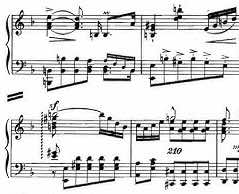Blog top > Articles from December 2024 > Charm of Second Movements in C.P.E. Bachʼs Concertos
This is a blog about this site, which introduces the lesser-known Emanuel Bach (C. P. E. Bach). This English version was translated from Japanese one by ChatGPT.
The Charm of the Second Movements in Emanuel Bachʼs Concertos

The Second Movements of Major Key Concertos
The second movements of Emanuel Bachʼs major key concertos are usually in a minor key. Among these, Wq. 14 seems particularly appealing.
Keyboard Concerto Wq. 14 in E Major
Keyboard Concerto Wq. 28 in B-flat Major
Keyboard Concerto Wq. 19 in A Major
Keyboard Concerto Wq. 25 in B-flat Major
Keyboard Concerto Wq. 34 in G Major
Keyboard Concerto Wq. 45 in D Major
Keyboard Concerto Wq. 12 in F Major
Keyboard Concerto Wq. 11 in D Major
Keyboard Concerto Wq. 29 in A Major
In Emanuel Bachʼs keyboard concertos, not all second movements of major key pieces are in a minor key; Wq. 43-5 is fundamentally in a major key.
The Second Movements of minor Key Concertos
Unlike Mozart, Emanuel Bach composed many minor key concertos, but the second movements of these minor key concertos are usually in a major key. Perhaps due to the presence of chromatic notes, they have a deeply moving resonance. The second movement of Wq. 17, featured on the top page of this site, is particularly captivating to me.
Keyboard Concerto Wq. 17 in D minor
Keyboard Concerto Wq. 15 in E minor
Keyboard Concerto Wq. 24 in E minor
Keyboard Concerto Wq. 37 in C minor
Keyboard Concerto Wq. 1 in A minor
Keyboard Concerto Wq. 5 in C minor
Keyboard Concerto Wq. 23 in D minor
Keyboard Concerto Wq. 26 in A minor
Keyboard Concerto Wq. 30 in B minor
In Emanuel Bachʼs keyboard concertos, not all second movements of minor key pieces are in a major key; Wq. 43-4 is fundamentally in a minor key.
Keyboard Concerto Wq. 43-4 in C minor